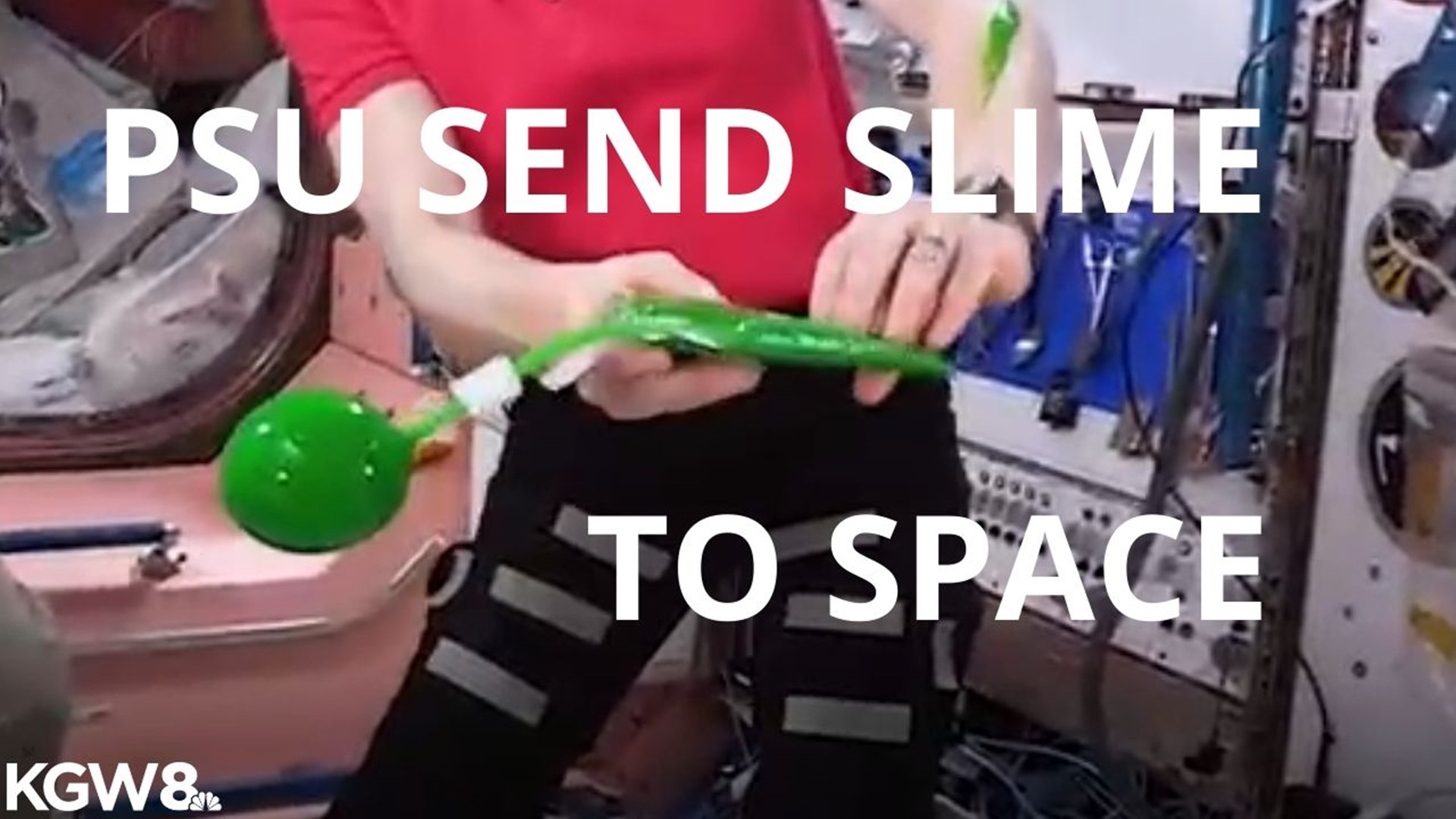PORTLAND, Ore — What happens when you send slime into space? That's what an unlikely pair, Nickelodeon and NASA, set out to discover - with the help of Portland State University engineers.
Nickelodeon’s virtual field trip 250 miles above Earth shows international space station scientists experimenting with slime to find out how it reacts in a microgravity environment. And it shows them getting slimed in space for the first time ever.
For that they needed to turn to the experts, which happen to be from Portland State University’s mechanical and materials engineering department in the Maseeh College of Engineering & Computer Science. The department has worked with NASA before on several "wacky" but useful projects over the years.
“We just went, ‘You’re kidding!’ They’re going to put slime in space,” said PSU mechanical engineering professor Mark Weislogel. “That’s such a unique fluid, we would never want to miss the opportunity to study something like that.”
Weislogel and research assistant Rihana Mungin designed the experiments for the astronauts.
As a kid, Mungin was a Nickelodeon fan and says it felt surreal to be called upon to help with this project.
“I audibly squealed and was very excited,” Mungin said. “We perform experiments aboard the International Space Station on a regular basis and we have a control room on campus and that is just incredible. I’m excited when projects like this come around because it’s an opportunity to show off what we are capable of doing.”
They set out to learn what happens when slime blobs spin around or shoot out of a syringe. What happens when a balloon filled with slime pops in space where liquids are weightless?
Never before done, Mungin and Weislogel say it turned out to be fun -- and informative.
"When you stretch liquids they rupture and form droplets. That could be disastrous if you’re having to take a blood sample, take a urine sample or you're doing some DNA sequencing,” Weislogel told KGW, “Those little drops are produced and go all over the place. Well, what's the limit of behavior of those drops when viscosity is huge? Nickelodeon slime! OK, so we're in good shape there.”
Slime is very viscous, or thick, because it is a polymer substance that is part liquid and part solid. Its viscosity changes when different forces are applied to it. Weislogel says the biggest takeaway from sending slime in space is that it breaks down over time and its properties change.
With the video from the space station and data they collected, PSU researchers studied what they call a viscous limit. Essentially, the viscous limit of the slime serves as a benchmark. The results from their project will guide future experiments on the space station in low gravity and with liquids here on earth.
“Droplets don’t fall, bubbles don’t rise, liquid does not do what you think it’s going to,” Weislogel said. “We just need to get that experience more and more as we're making our systems better and better for living and working in space.”
Nickelodeon posted the virtual field trip online so kids and their parents can follow along from home while doing distance learning or on summer break.
Mungin hopes this opens doors and windows for kids and peaks their interest in the science, technology, engineering and math (STEM) fields.
“I think sometimes people have this very rigid idea of what science looks like, what a scientist looks like. And even though we're having fun - we’re having an incredible time - we're also getting immense amounts of data that we could never get otherwise," Mungin said.


